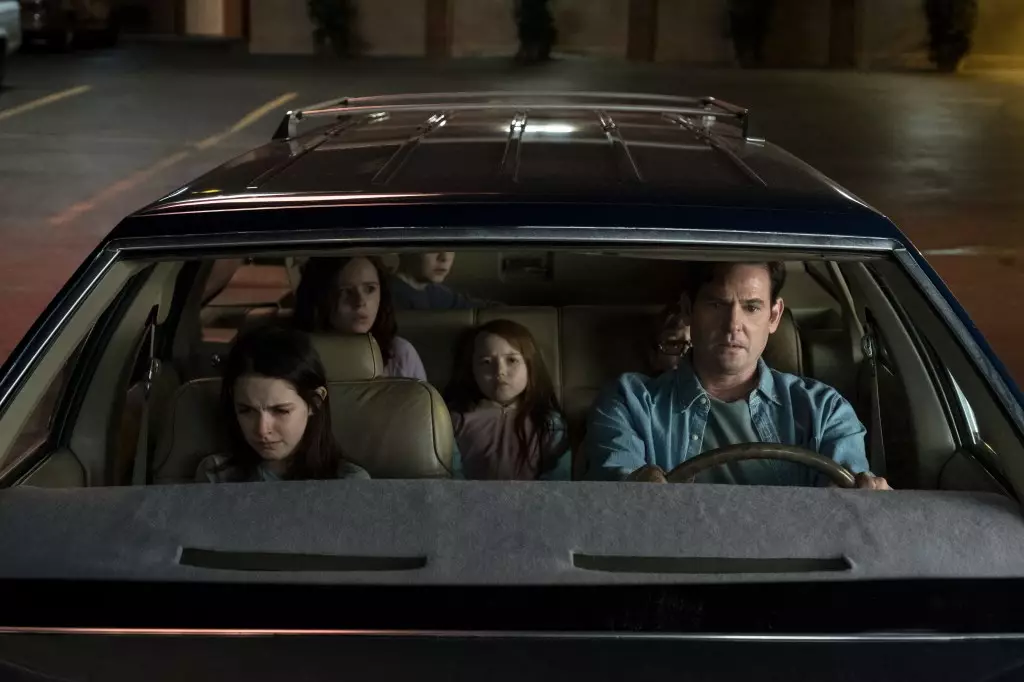In an era where emotional struggles often remain cloaked behind societal taboos, horror filmmaker Mike Flanagan emerges as an unlikely figure of hope and healing. At SXSW London, Flanagan candidly shared how his acclaimed works, particularly “The Haunting of Hill House,” serve as much more than petrifying narratives; they are an exploration of profound grief stemming from personal loss, specifically a suicide in his family. This is not merely a therapeutic excavation of his psyche; it represents a visceral confrontation with the anguish that shaped his existence. The haunting imagery and complex themes within his creations expose the cultural tendency to dismiss horror as mere entertainment, relegating it to the realm of sensational scares rather than the potent reflections on human fragility and resilience.
Art as Therapy: Confronting Darkness Through Storytelling
Flanagan’s art is not just a means of storytelling; it acts as a vital mechanism for processing deep-seated trauma. He acknowledges that the journey through grief is perpetual and chillingly introspective. The very fabric of “The Haunting of Hill House” intertwines horror with familial relations, reflecting the bittersweet reality of loss, regret, and memory. For many, including myself, Flanagan’s plea to bring authentic narratives into the horror genre feels like a challenge to societal notions surrounding trauma. By weaving his narrative with personal grief, he offers audiences not just a compelling story, but a lifeline toward confronting their vulnerabilities. It’s a reminder that horror can cradle empathy, inviting viewers to reckon with their sorrows through relatable narratives that don’t shy away from the human condition’s darker aspects.
Pushing Against the Bias of the Genre
Flanagan’s insights into the underlying biases that plague the horror genre reveal a frustrating truth: there exists a consistent skepticism toward horror as a sophisticated storytelling medium. He articulates a concern that the industry routinely resets its perception of horror, rediscovering its dramatic depth only when a work achieves critical acclaim. The example he cites—Jordan Peele’s Oscar-winning contributions—serves as a profound critique of this cyclical recognition, highlighting the necessity for continual advocacy within the genre. It is utterly baffling that audiences are frequently astounded by compelling stories nestled within horror, as if the potential for emotional resonance is unimaginable amidst the chill of fear. This cynicism stifles creativity, perpetuating a cycle where fear-oriented narratives are disregarded rather than embraced.
Beyond the Scares: The Heartbeat of Horror
What distinguishes Flanagan’s work is his ability to peel back the layers of horror and reveal the intricate human stories buried within. In his collaboration with literary giant Stephen King, Flanagan emphasizes that horror is not the endpoint; rather, it is a vehicle for exploring the rich tapestry of human experience. His insistence that King “is not a horror writer” but a “gooey-hearted, lovely humanist” resonates. This critical perspective prompts much-needed discourse around the genre, urging fans and critics alike to appreciate horror through the lens of emotional engagement. Let’s be honest: horror does not merely exist to elicit screams; its true power lies in crafting narratives that invite audiences to confront their fears while finding common ground in the shared experiences of love, loss, and redemption.
Defending Monologue as a Form of Art
As Flanagan calls for the preservation of monologues in film, he touches upon an essential quality that is being diluted in contemporary cinema. The monologue, often dismissed by studios in the pursuit of streamlined narratives, holds a unique power to encapsulate a character’s inner turmoil. It is a form of emotional authenticity that connects actors and audiences in an intimate dance of words that can illuminate one’s psyche. In making his impassioned plea, Flanagan draws attention to a valuable artistic technique that enriches storytelling. In an age dominated by rapid pacing and extensive visual effects, the exquisite beauty of verbal expression must not be sacrificed; it is, after all, the heart that breathes life into any horror tale.
Ultimately, in exploring the interactions between horror, grief, and artistic expression, Mike Flanagan has emerged not just as a director but as a necessary voice advocating for creative honesty. His works transcend mere entertainment—serving instead as a pulsating reminder of the fragility and strength within the human spirit. Through the medium of horror, he underscores the importance of confronting our dark shadows, fostering a community built around empathy and understanding.


Leave a Reply